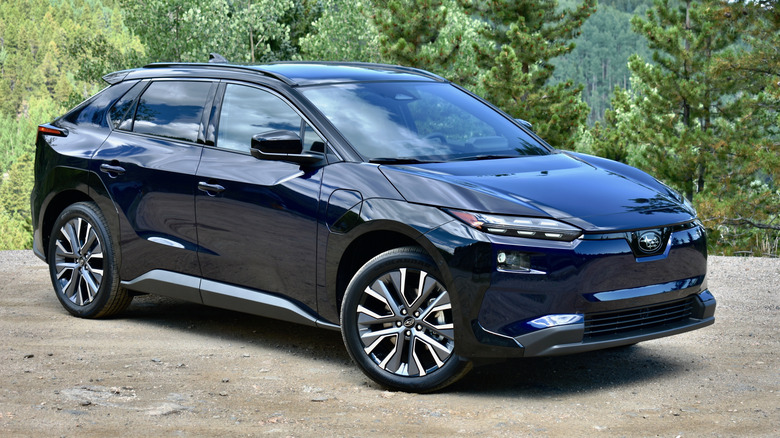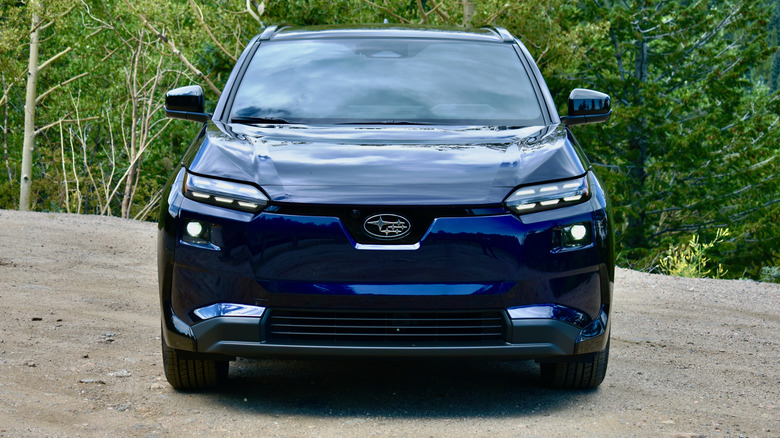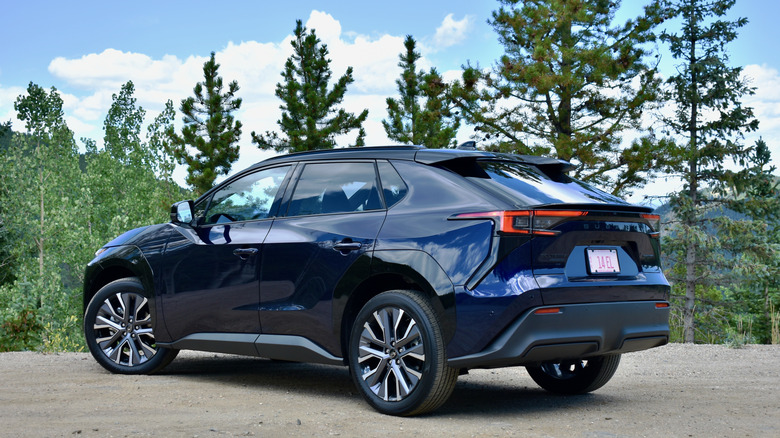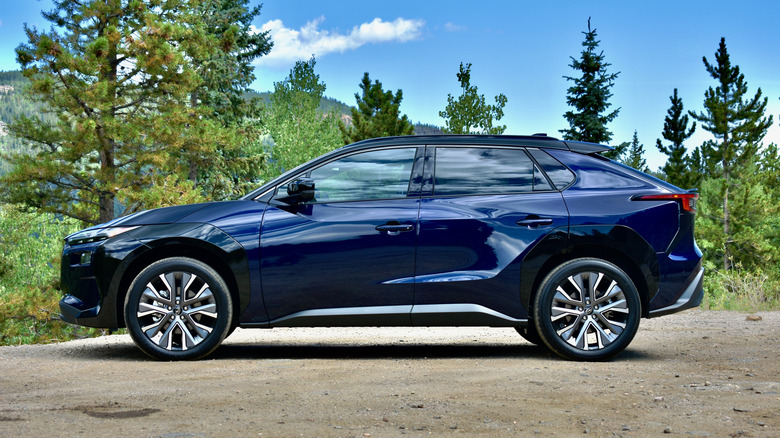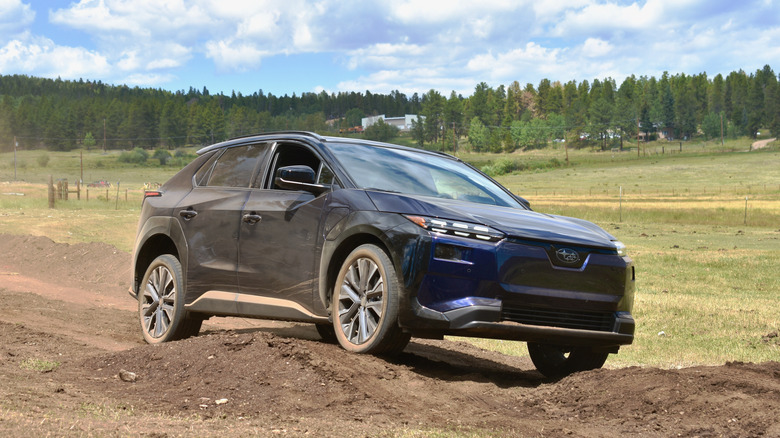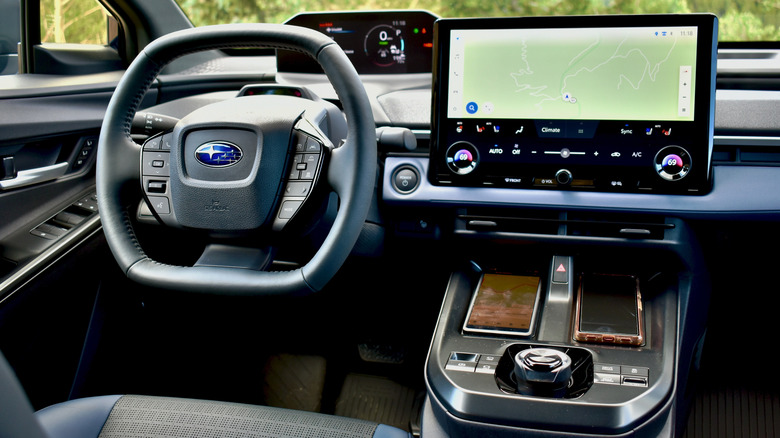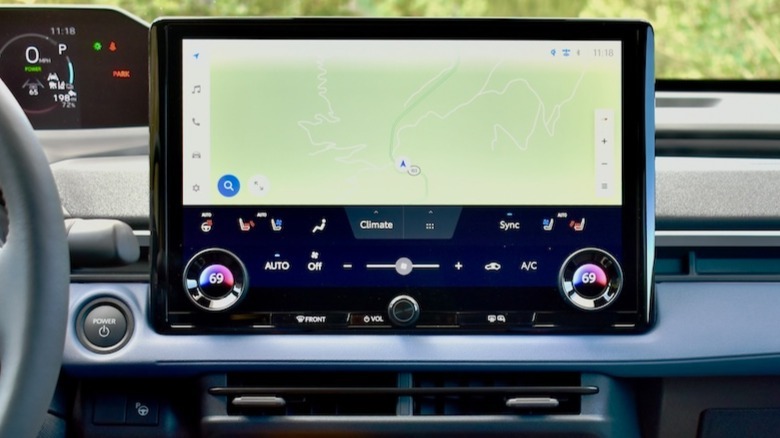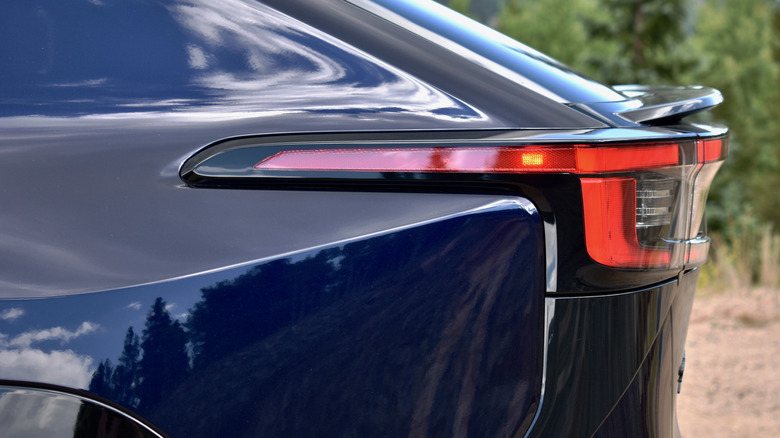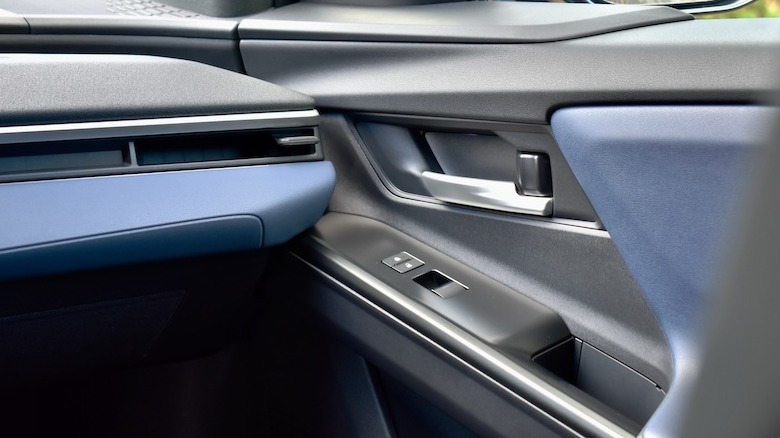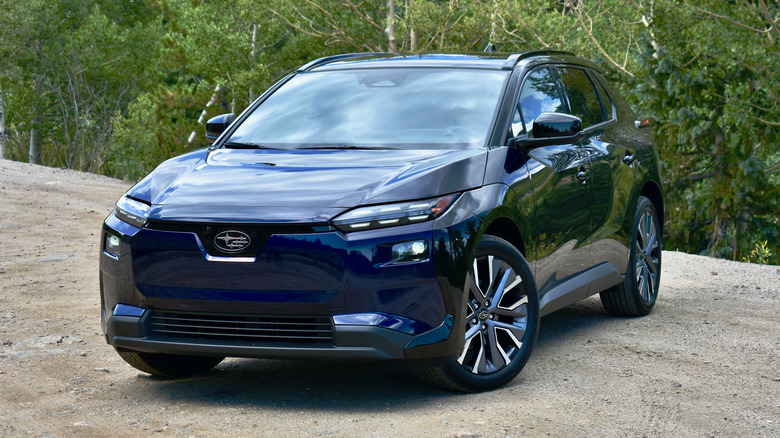The 2026 Subaru Solterra Drives Well, But History May Still Repeat Itself
The arrival of a mass-market Subaru EV was a momentous occasion for the brand's stereotypical demographics, but now that the refreshed 2026 Subaru Solterra is here, it's apparent that the original version was paradoxically both late and early at the same time.
With marketing campaigns based around cleaning up National Parks and finding homes for puppies, Subaru was likely always going to have an easier time than most brands in convincing its customers to buy lower-emission vehicles. But lacking the resources to develop a full EV on its own, Subaru was shackled to Toyota, which dragged its feet as it worked to convince its own customers to just keep buying more hybrids.
Thus the Solterra and its twin, the Toyota bZ4X, arrived late to the EV party as 2023 models with very little to recommend them beyond popular brand names. Now that the updated 2026 Solterra has landed with a host of changes that improve range, design, and, tech (changes that will also be applied to a refreshed bZ4X, now known simply as the Toyota bZ), that first version seems even more like a rough draft rather than a finished product.
The new face of Subaru EVs
The original Solterra looked like a car from a driver's ed manual. While its lack of a grille certainly conveyed that it was an EV, it also conveyed the amount of effort of a person hastily applying the Photoshop eraser tool to remove copyrighted imagery. The Solterra also looked identical to its Toyota sibling, which didn't exactly say much for the possibilities of electrification. Thankfully, the new Solterra addresses both issues.
That dowdy front fascia has been replaced with something more conventional, yet more distinctive. The belt-like trim piece that houses the Subaru badge is a better approach to the no-grille EV look, while new daytime running lights (with six elements, representing the star cluster Pleiades, known as Subaru in Japanese) make the Solterra look confident instead of depressed. As with so many new cars, nondescript rectangles below the running lights serve as the headlights.
It's impressive considering how much the new front fascia improves the Solterra's looks, especially considering that the rest of the sheetmetal doesn't change much. It also helps distinguish the Solterra from the 2026 Toyota bZ, which looks more like the outgoing bZ4X. And it looks just as good on the Trailseeker and Uncharted EVs that will soon join the Solterra in Subaru showrooms.
Changes are more than skin deep
Cosmetic changes are typical part of midcycle refreshes like the one the 2026 Solterra enjoys, but Subaru also made extensive changes to the structure, powertrain, and other areas that aren't immediately apparent to the eye or the spec sheet.
Subaru changed the front subframe, the crash structure, and the motors, while the motors themselves now have silicon-carbide inverters, among other efficiency-related improvements. The steering rack is now hard-mounted for better feel, and much of the running gear (including control arms, hubs, and axles) has been revised. There's also no longer a cross bar obstructing the view through the moonroof; extra bracing elsewhere compensates for that.
On the software side, Subaru changed the behavior of the all-wheel drive system for easier cornering. The suspension is retuned as well, while inside, the center console was rearranged to make room for a second wireless smartphone charger and a bigger touchscreen—one that's standard on all models.
Quicker, but not more exciting
Easier to spot is the increase in battery-pack size from 72.8 kilowatt-hours to 74.7 kWh, and the increase in output from the standard dual-motor all-wheel drive powertrain (this is a Subaru, after all) from 215 horsepower to 233 hp. A new XT tune (recycling nomenclature from turbocharged versions of gasoline Subaru models) for the Limited and Touring trim levels further bumps output to 338 hp.
Subaru says the XT models will do zero to 60 mph in less than five seconds, which would've once been an impressive figure for the gasoline Subaru WRX sport compact, but isn't particularly remarkable for an EV. The subjective feeling of acceleration wasn't any more exciting; Subaru customers coming out of a Crosstrek or Forester might be wowed, but anyone who's driven an EV before won't.
Subaru also changed the all-wheel drive control logic to help make cornering a bit smoother. The Solterra indeed felt sure-footed on a variety of surfaces and at a variety of speeds, but it's definitely set up more for inspiring confidence in tricky conditions than inspiring joy when an open stretch of entertaining road appears. But while it lacks an inner WRX, the Solterra is perfectly pleasant to drive, the only issue being steering that's a tad too heavy.
Drivers shouldn't venture too far into the wilderness
Subaru, along with most other car brands, is trying to make its vehicles seem more rugged in order to humor its customers' active-lifestyle self-images. The Solterra shows the limits of that approach. Its 8.3 inches of ground clearance is more than most competitor EVs, and it has off-road features like hill-descent control, a hill-climb assist feature that will power the car up an incline at a set speed, and Subaru's X-Mode driver-mode selector. But the Solterra is still very much a conventional crossover, not a Jeep Wrangler.
Even 8.3 inches of ground clearance wasn't enough for some of the rocks on the dirt roads that comprised part of the drive route, nor the mini-moguls on a short off-road course set up by Subaru. And while a front camera view is available at low speeds, X-Mode doesn't disable the federally-mandated programming that switches it off above 5 mph. The camera view doesn't come back when speed drops, either. The suspension also lacks the articulation of a true off-roader, and the car's software had trouble compensating for the resulting lifting of wheels on uneven surfaces.
While it may not be off-road ready, the Solterra is certainly gravel-road ready, though. Its soft suspension absorbed bumps nicely, while exhibiting good body control, ensuring that occupants weren't tossed around when the roads got rough. There are many compact electric crossovers, but few match the Solterra's level of ride comfort—something that's probably more relevant to owners.
Quirky-but-functional interior
Subaru's onetime quirkiness is fast disappearing into homogeneity, but one of its last bastions is the Solterra's cabin. The dashboard and door panels produce a riot of incongruent angles, the steering wheel and 7.0-inch digital gauge cluster look like props from a 1980s sci-fi movie, and for some reason there's no glovebox. It's as if the people who designed it had never seen another car interior, and that's fantastic.
Everything is fairly functional, too. The dashboard appears to have been designed for Toyota's Japanese-market steering yoke and steer-by-wire system, but aside from having to move the wheel a bit lower than usual to keep the instrument cluster unobstructed, it's easy to find a good driving position. A storage nook underneath the center console makes up for the lack of a glovebox, and Subaru provides dual wireless chargers on either side of the shifter. Passenger space is in line with rival EVs, although cargo space behind the rear seats is a bit less generous, and there's no frunk to make up for that.
For 2026, all Solterra models get a new 14.0-inch touchscreen—replacing an 8.0-inch touchscreen on the base Premium trim level and a 12.3-inch screen on other models—while retaining standard wireless Apple CarPlay and Android Auto. Making the screen bigger doesn't really improve its functionality; the real benefit is the addition of volume and temperature knobs that should have been part of the dashboard layout from the beginning.
Range and charging need further improvement
The bigger battery pack and various efficiency-related improvements will boost range from the previous best of 227 miles to 288 miles, according to Subaru (official EPA ratings weren't available at press time). That's just adequate considering that the dual-motor Hyundai Ioniq 5 or Kia EV6 are already rated at 290 miles and 295 miles, respectively, while the dual-motor Chevrolet Equinox EV is rated at 285 miles. Opt for front-wheel drive, and the Chevy can go up to 319 miles on a charge.
The range increase would be a bigger deal if the Solterra could make use of 350 kilowatt DC fast-chargers like the 800-volt Hyundai and Kia, but it maxes out at 150 kW. Even that is an improvement over the previous 100 kW, allowing for a 10%-80% charge in about 30 minutes, Subaru estimates. For 2026, the Solterra switches to the North American Charging Standard (NACS), with the charge port relocated to the right front fender for a better fit with Tesla Supercharger stations.
For AC charging, an 11-kW onboard charger is now standard, at least, replacing a 6.6-kW unit. Plug and Charge capability is now included as well, while battery preconditioning ensures the best charging performance possible in extreme temperatures. A standard heated steering wheel, heated front seats, and radiant heaters help minimize the amount of energy needed to keep occupants warm in colder temperatures, so it should be possible to get close to our 3.9 miles per kWh average in less-ideal conditions.
Good news for Subaru fans
Subaru hadn't finalized pricing when we drove the 2026 Solterra, but indicated that it would stay close to the 2025 model which, for reference, had a base price of just under $40,000 and cost just over $45,000 in its most-expensive Touring trim. In addition to the carryover Touring, Limited, and Premium trim levels (listed in descending price order), Limited XT and Touring XT models join the lineup for 2026—and will likely raise the price ceiling.
The 2025 Solterra was competitively priced against rivals like the Hyundai Ioniq 5, Kia EV6, and Volkswagen ID.4, but that was only after Subaru slashed the price by $6,500 compared to the 2024 model. Subaru also had to price the Solterra knowing it wouldn't qualify for a federal EV tax credit so, with the credit about to disappear, it's at least better prepared than rivals in that regard.
Unless it turns out to be a lot cheaper than other EVs, there's little reason to buy a Solterra on merit. Its driving dynamics, interior space, and tech are average, and it doesn't exactly set new standards for range or charging either. A distinctive design helps, but it's also hard to call this car a true Subaru when it has a Toyota twin. For loyal customers who must have the six-star badge, though, the refreshed Solterra is a big improvement over the original. That extensive changes still haven't made it truly competitive shows just how far behind the first Solterra was.
